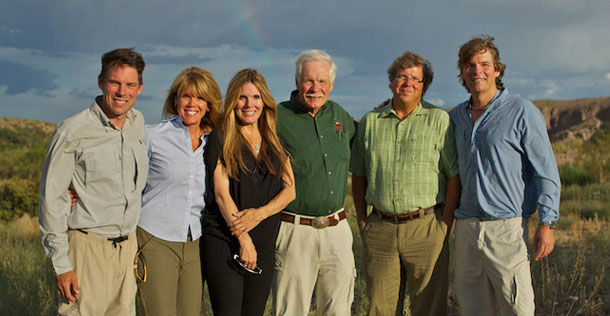Even in Sunlight, Nature Is Spectacular
Enjoy the eclipse. Then appreciate the surroundings when the moon has moved on
When thousands of Americans gaze up Monday as the moon blocks the sun, they’d do well to follow the example of Annie Dillard, who could be regarded as the nation’s poet laureate of solar eclipses.
On Feb. 26, 1979, Ms. Dillard was near Yakima, Wash., as an eclipse darkened a sliver of the planet. She was already famous by that time for “Pilgrim at Tinker Creek,” a Pulitzer Prize-winning book about her walks in the woods, fields, creeks and mountains around Roanoke, Va. Now she would use the same lyrical prose to describe the dance between the sun and the moon.
“At once this disk of sky slid over the sun like a lid,” Ms. Dillard wrote in “Total Eclipse,” an essay published in 1982. “The sky snapped over the sun like a lens cover. The hatch in the brain slammed.” Ms. Dillard’s account is mythic and memorable. But what’s really striking about the essay, which is getting renewed attention this month, is what Ms. Dillard notices in the surrounding landscape, both before and after her world goes dark.
The eclipse, as it turns out, isn’t the only or even the most impressive vision of the day. Beyond a hill, Ms. Dillard spots Yakima Valley, a view available all the time, regardless of celestial movements: “Through the valley wandered a thin, shining river, and from the river extended fine, frozen irrigation ditches. Distance blurred and blued the sight, so that the whole valley looked like a thickness or sediment at the bottom of the sky.”
As the media coverage of Monday’s eclipse makes clear, popular culture conditions us to think of nature as a series of cinematic blockbusters: the Northern Lights, the 100-year comet, the once-in-a-lifetime chance to see the sun vanish in the middle of the day. But seeing nature as a kind of amusement arcade, worthy of note only when it dazzles, blinds us to the basic wonder of the land, sea and sky on any given day.
In 1956, E.B. White suggested that in a more enlightened world, the arrival of migratory birds would be covered as closely by the newspaper as the comings and goings of commerce.
No doubt President Theodore Roosevelt, a generation before White, would have agreed. As historian Douglas Brinkley notes in “The Wilderness Warrior,” Roosevelt once charged into a cabinet meeting with such urgency that his department secretaries knew something truly momentous had occurred. The president’s news: “Just now I saw a chestnut-sided warbler—and this is only February!”
That kind of unguarded exuberance may come easily for a naturalist, but anyone can learn it with practice. It’s a matter of reading not only the headlines of creation but also the fine print: a summer tomato, a winter’s first snow, a billowing cloud in a Michelangelo sky.
I plan to be in Tennessee on Monday, joining many others to witness the day darken long before dusk. But the real trick will be to connect with nature after the news crews have moved on. As Ms. Dillard wrote, “beauty and grace are performed whether or not we will or sense them. The least we can do is try to be there.”
Mr. Heitman, a columnist for the Advocate newspaper in Louisiana, is the author of “A Summer of Birds: John James Audubon at Oakley House.”
----------------------------------------------------------------
The Biophilia Hypothesis
https://www.google.com/url?sa=t&rct=j&q=&esrc=s&source=web&cd=10&cad=rja&uact=8&ved=0ahUKEwiRu5f3uenVAhVHl1QKHQd3AJ8QFghUMAk&url=http%3A%2F%2Fwww.smithsonianmag.com%2Fscience-nature%2Fcan-world-really-set-aside-half-planet-wildlife-180952379%2F&usg=AFQjCNHNw_7hKr-j07WC2akTqVWeR0PG8g
Can the World Really Set Aside Half of the Planet for Wildlife?
The eminent evolutionary biologist E.O. Wilson has an audacious vision for saving Earth from a cataclysmic extinction event
-----------------------------------------------------------------
https://www.google.com/url?sa=t&rct=j&q=&esrc=s&source=web&cd=6&cad=rja&uact=8&ved=0ahUKEwiRu5f3uenVAhVHl1QKHQd3AJ8QFgg4MAU&url=http%3A%2F%2Fwww.turnerfoundation.org%2Four-story%2F&usg=AFQjCNHWsQcExfx60DQXMEqgIAFn5qkUvg
Safeguarding Habitat Program-THE (TED)
TURNER FOUNDATION
If you ask our Founder and Chairman, Ted Turner, what his favorite natural place is - you'll get a response that really hits home.
"It's Planet Earth. The whole place. I've been from the Arctic to the rainforest to the equator to the desert. I've been in over 70 countries. I love this world. I want to see humanity succeed, and learn to live in peace and harmony with the environment and each other." Turner has always been interested in the totality of the planet.
"It's Planet Earth. The whole place. I've been from the Arctic to the rainforest to the equator to the desert. I've been in over 70 countries. I love this world. I want to see humanity succeed, and learn to live in peace and harmony with the environment and each other." Turner has always been interested in the totality of the planet.
The goal of this program is to protect terrestrial and marine habitats and wildlife critical for the preservation of biodiversity. Focus is placed on protecting functioning ecosystems, including core, intact habitats, buffer zones, and wildlife corridors on both private and public lands. Wildlife communities of interest include far-ranging carnivores, fish, migratory birds, pollinators, and other keystone indicators of ecosystem health. Projects of interest include both ecosystem-based management solutions and local projects that serve as real-world case studies.
The Turner Foundation invests in select national and priority state level efforts to conserve wildlife and habitat. States with priority consideration include South Carolina, Georgia, Florida, Montana, New Mexico, and Alaska. In addition, the foundation prioritizes the following regions for wildlife and habitat conservation grantmaking: the Southeastern Coastal Plain (specifically GA and SC); the Florida Panhandle and the Red Hills Region of north Florida and southwest Georgia; the Sky Islands region of southwestern NM, southeastern Arizona, and northern Mexico; the Greater Yellowstone Ecosystem north to the transboundary Flathead; and south central/southeastern Alaska.
Internationally, the Turner Foundation supports salmon and marine conservation in the Russian Far East and along the central coast of British Columbia.







No comments:
Post a Comment